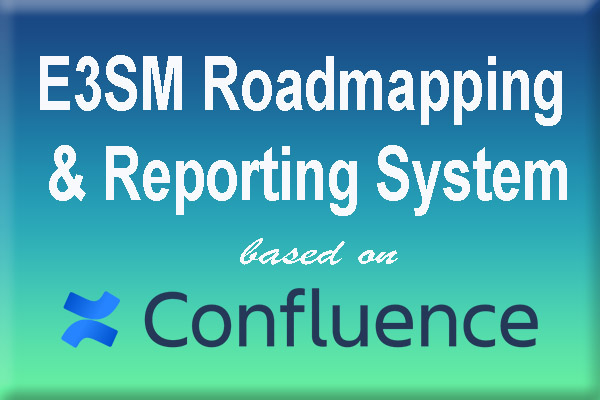New Reporting System for E3SM Phase 3
The E3SM project encompasses around 100 scientists, spread across eight national laboratories from New York to California. Team members are well-versed in remote collaborations, but task planning and reporting are challenging in such a dispersed work environment. E3SM staff also each contribute to numerous groups—often working on component development, science campaigns, and infrastructure in the same week. Such a diverse workforce is a strength but increases the complexity of task tracking and reporting.
At the end of E3SM’s Phase 2 (second funding period) and while writing the proposal for phase 3, the leadership decided to abandon the Jira-based reporting and instead use Confluence. Jira is a software tool specifically designed for detailed task planning and tracking, usually adopted by agile software development teams. Confluence is a wiki software that E3SM is using for internal communication and work documentation. Confluence has been successfully adopted throughout the project and is a popular tool with E3SM team members.
The main reasons for the desire to switch from Jira to a Confluence-based system were:
- Jira is extremely configurable, but the multitude of options complicates reporting and is more than what E3SM needs.
- Consolidating reports into Confluence pages simplifies the process, as Confluence is used for all other meetings, notes, and planning in the E3SM project. Switching between two tools is undesirable.
- New (and some seasoned) users found Jira difficult to use.
The Deep Dive (DD) was born to brainstorm and propose a new solution based on Confluence. The DD Team consisted of Mark Petersen, Wuyin Lin, Gautam Bisht, and Rob Jacob, and was led by Renata McCoy. The team aimed to create a solution with the following characteristics:
- first and foremost the simplicity – to minimize the time everyone spends writing reports
- preserving accountability – the project continues to require everyone to report on their work
- enhancing the visibility and transparency – the reports and work need to be easily and readily accessible in confluence, and visible across the whole project
- the continuity and cohesion between the planning and reporting cycle
The new Roadmapping and Reporting system starts with a planning phase when Group Leads create roadmaps, beginning from 3-year, refining to 1-year, and further refining to the most detailed Quarterly Roadmaps with quarter-time tasks, which the project calls epics.
The Quarterly Roadmap defines epics, and their Epic Leads, who then create epic pages that track the work on the epic. The Epic Lead defines how the team reports on the epic, but there are bi-weekly reports on the work from both the Epic Lead and the team members. They are all done with the page for the epic.
The reporting time culminates with the quarterly reports from epic leads and summary reports from Group Leads. This is followed by a reflection time, called retrospective, when group leads think about each epic, comparing the plan to the actual work done during the quarter. This step prepares the Group Leads for the next phase of roadmapping, and helps with the planning for the next period and next development cycle. This way the project achieves cohesion and continuity between planning, reporting, and agility—using incremental planning with retrospective and dynamic adjustments.
The new system is very simple. The reports on an epic are done within a single confluence page, and there is a relaxed requirement on the reports by the team members. By using confluence macros and labels, both the roadmaps and the reports can be aggregated and summarized across the whole project, and are visible and transparent to all.
Resources
Roadmapping and Reporting All-Hands webinar:
- presentation: e3sm_reporting_tutorial_230209.pdf
- recording: E3SM Phase 3 Reporting Tutorial
Project’s Internal Confluence pages:
This article is a part of the E3SM “Floating Points” Newsletter, to read the full Newsletter check:



